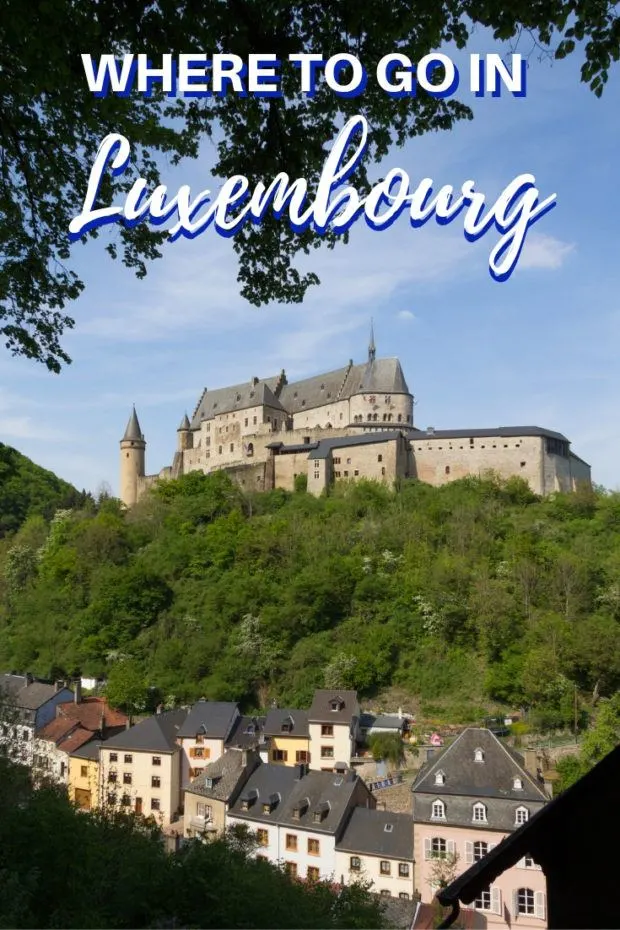Luxembourg is a small country dotted with enchanting towns that seem straight from a story book. Across the landscape, riverside cafes mix with magnificent castles, historic buildings, and ruins to create a unique patchwork. There are many fabulous places to visit in Luxembourg. We’ve visited twice—in spring and winter—and have found enjoyable experiences no matter the season.
At less than 1000 square miles, Luxembourg is one of the smallest countries in Europe, and it is the world’s only Grand Duchy. It is landlocked by Belgium, Germany, and France, so it has a character all its own while benefiting from the influences of it neighbors.
Thanks to its small size and an extensive public transportation system, it’s very easy to get around and see the different cities in Luxembourg. It’s possible to visit all the destinations we recommend in just four days, but five days or more would make for a more leisurely trip.
Clervaux Castle and The Family of Man
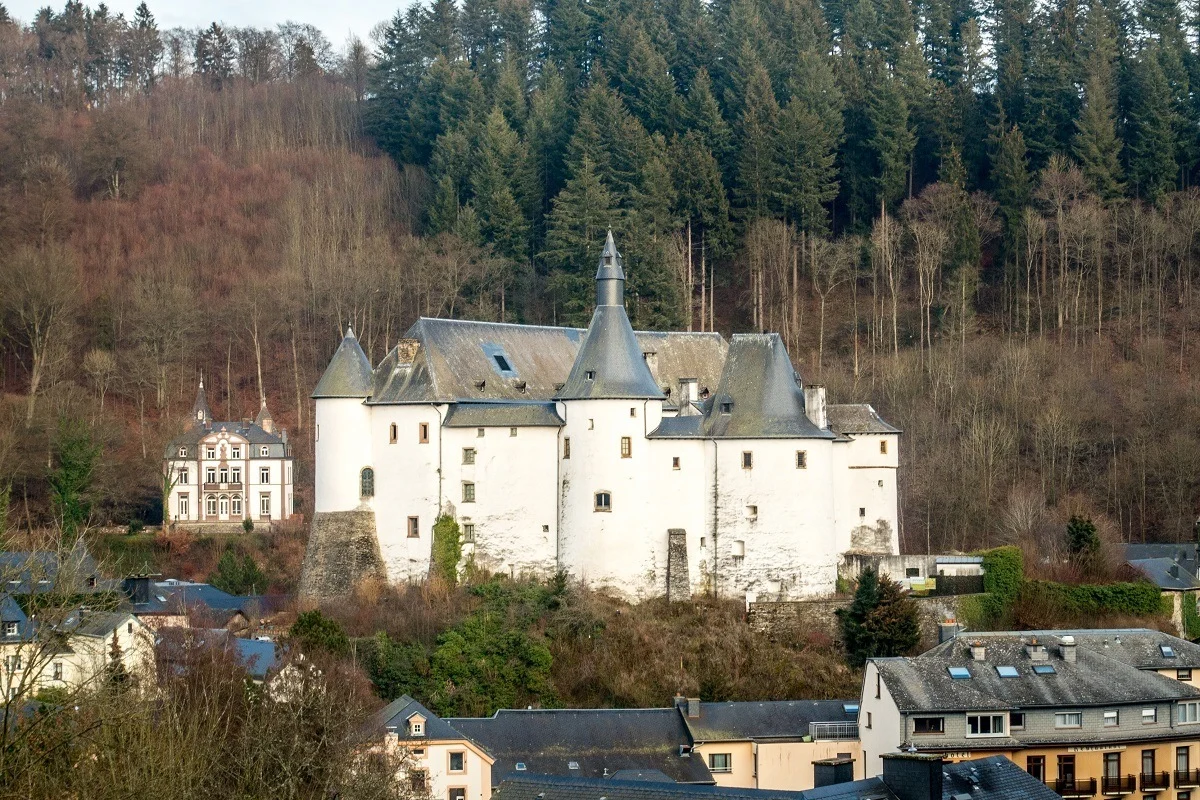
There are certain things most ancient castles have in common—suits of armor, tales of knights, grand halls with stories of massive banquets. Clervaux Castle has none of those things. Instead, this castle, originally built in the 12th century, is home to several museums that are among the top places to see in Luxembourg.
The most prominent display in Clervaux Castle is a photo exhibit called The Family of Man. Curated by Edward Steichen, Director of Photography at the Museum of Modern Art (MoMA) in New York, the exhibit brings together over 500 images. Together, the collection shows the common threads and experiences of people around the world from birth and war to school and voting.
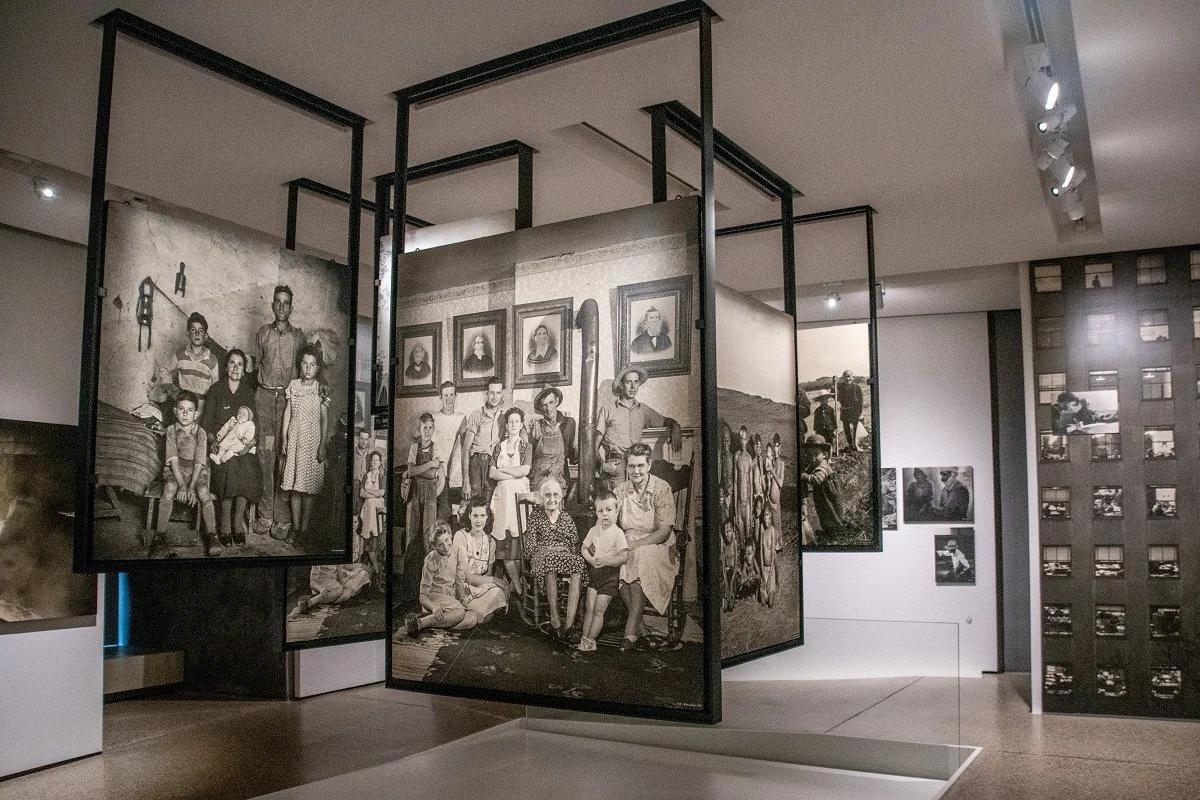
The Family of Man is like a giant photo essay on what it means to be human. During the late 1950s and 1960, the exhibit toured 37 countries on six continents. It found a permanent home in Clervaux Castle in 1994 (Steichen was from Luxembourg) and, in 2003, was added to UNESCO’s Memory of the World Register. Anyone with an interest in photography or different cultures will find The Family of Man fascinating.
Another part of the castle has been transformed into the Battle of Ardennes Museum, one of the top Luxembourg attractions for World War II buffs. The exhibits cover the history of the Battle of Clervaux–the opening engagement of the famous Battle of the Bulge–that happened in Clervaux in December 1944.
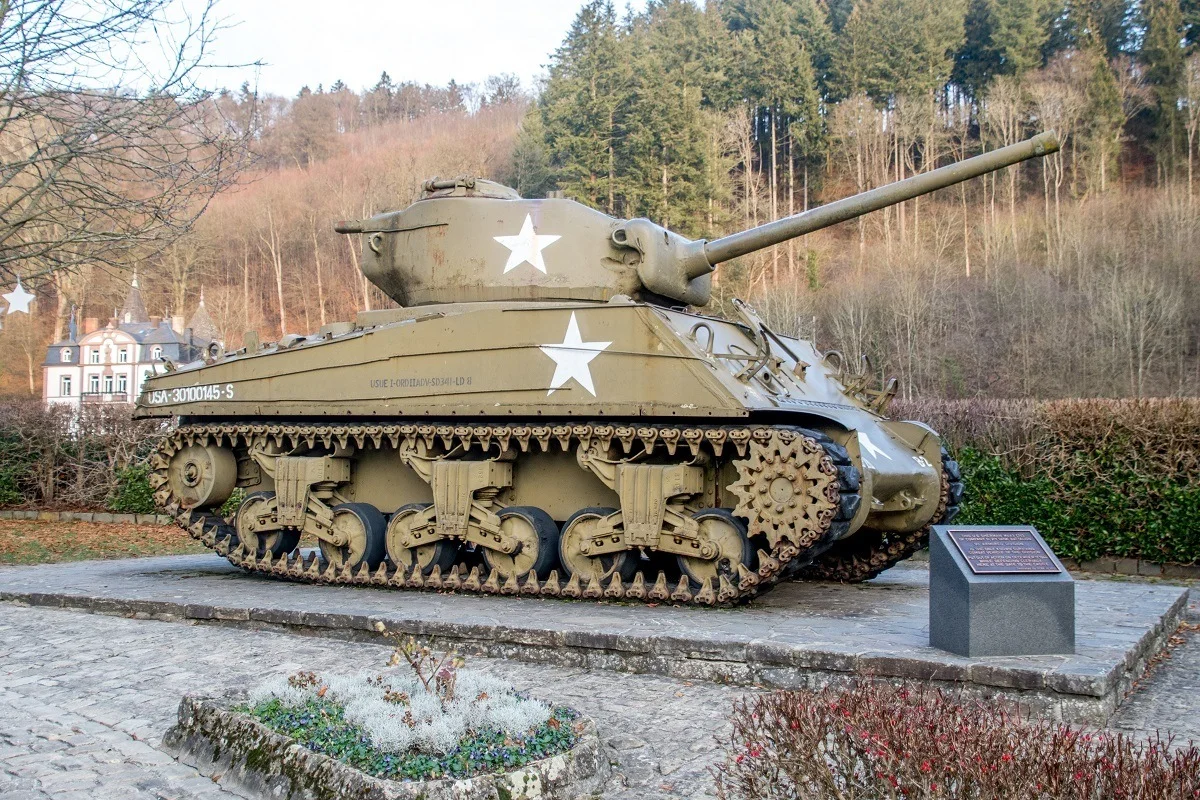
The castle was nearly destroyed during the fighting, so it’s a fitting place to show all the American, German, and Luxembourgish World War II artifacts. An American Sherman tank that participated in the battle and a piece of German artillery are on display in front of the castle.
In town, you’ll find regular markets, pastry shops, and lots of opportunities for shopping. We also loved the 100-year-old parish church that sits just above the castle as well as the Abbey of St. Maurice and St. Maurus, the red-roofed building that overlooks the valley from high on the hill. Hiking trails nearby let visitors explore the beautiful natural setting.
Echternach and its Abbey
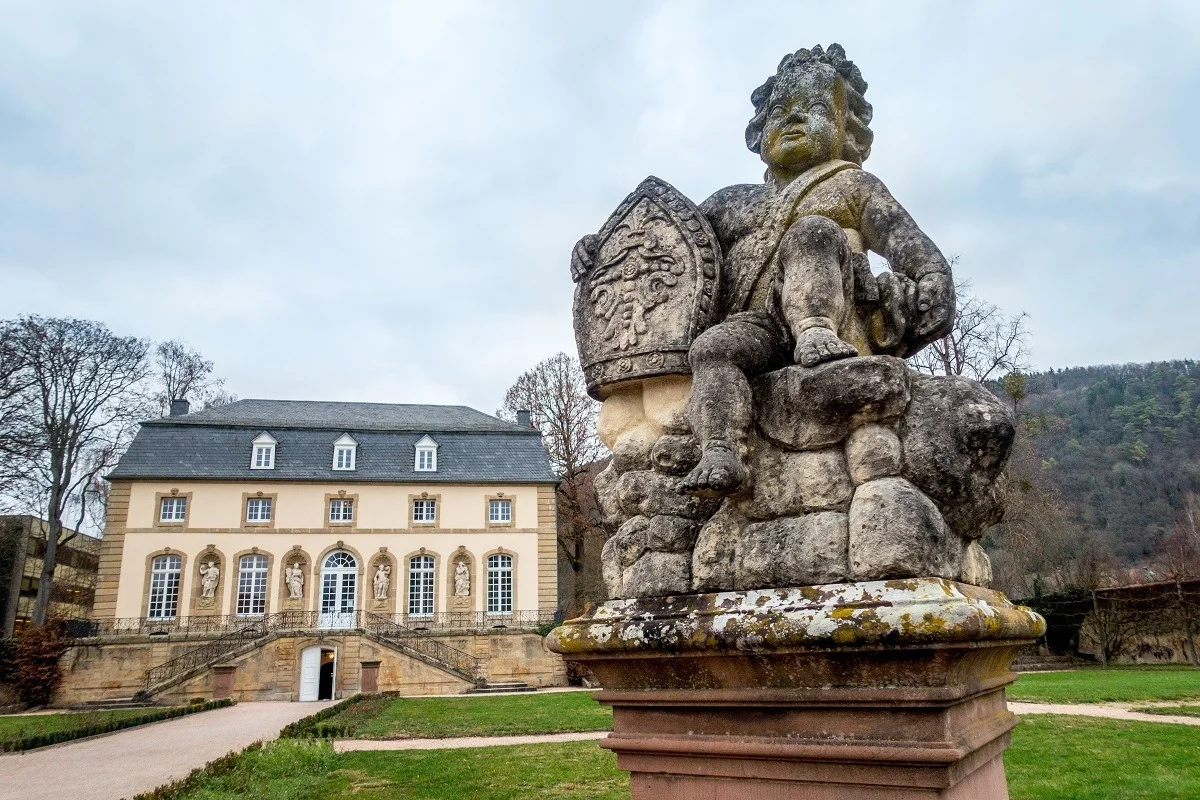
A small town on the German border, Echternach is rich in history and outdoor experiences. It traces its origins to 698 when St. Willibrord founded his abbey here and the construction of the town followed. Those ancient origins make Echternach the oldest town in Luxembourg.
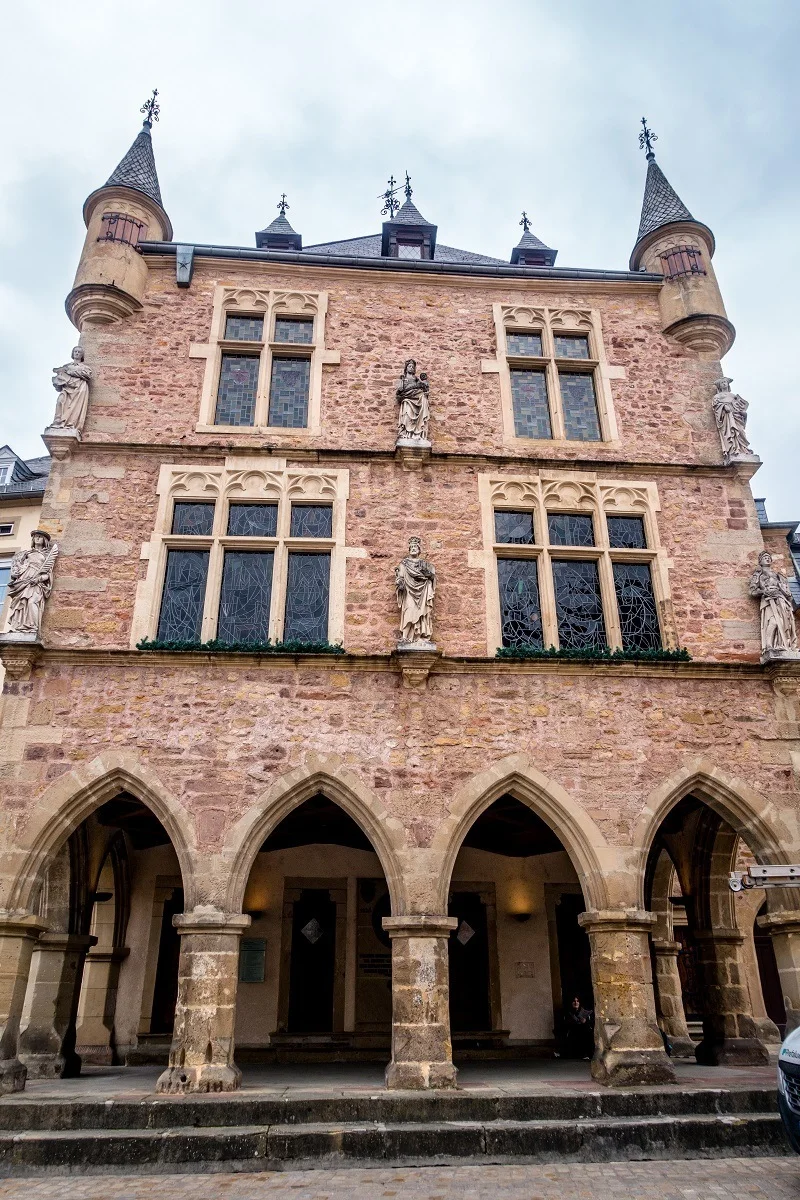
In the city center, you’ll find the bustling market square and a variety of historical markers and attractions. One of the most famous is the former palace of justice, the Denzelt. Some parts of the building date from its original construction in the 14th century, though it has been restored over the years. The statues—which include the Virgin Mary, King Salomon, and the four cardinal virtues— were added in 1898.
Among the most famous Luxembourg landmarks, Echternach Abbey remains the most place to visit in town. Rebuilt six times over the 14 centuries since its founding, it was known for its magnificent illuminated manuscripts. The Abbey’s museum has facsimiles of some of the ancient pages and traces the history of St. Willibrord and the Abbey. The 8th-century tomb of Willibrord, who is the patron saint of Luxembourg, can be visited beneath the Abbey.
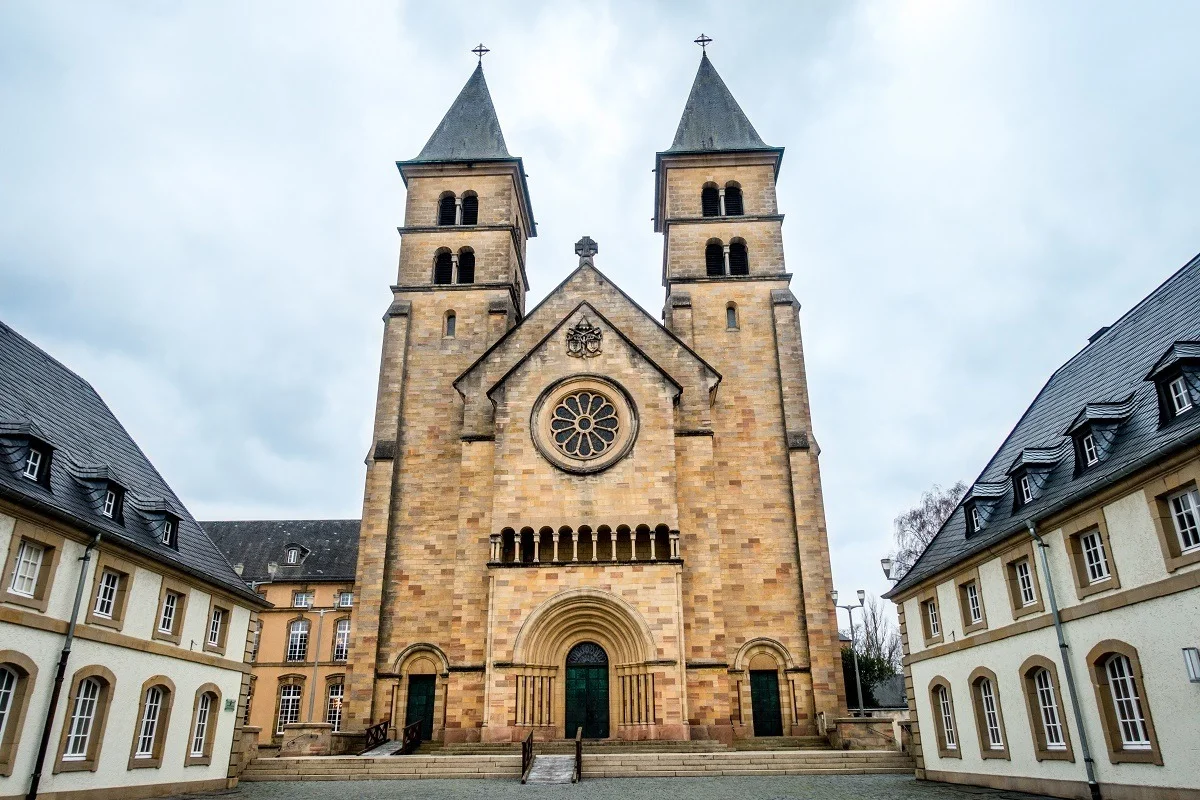
The best time of the year to visit the Abbey is on Whit Tuesday when a dancing procession in Willibrord’s honor is held in town. For about a mile, thousands of pilgrims dance slowly through the town past Saint Willibrod’s crypt as thousands more look on. The procession is listed by UNESCO as part of the Intangible Cultural Heritage of Humanity and is one of the most unique things to see in Luxembourg.
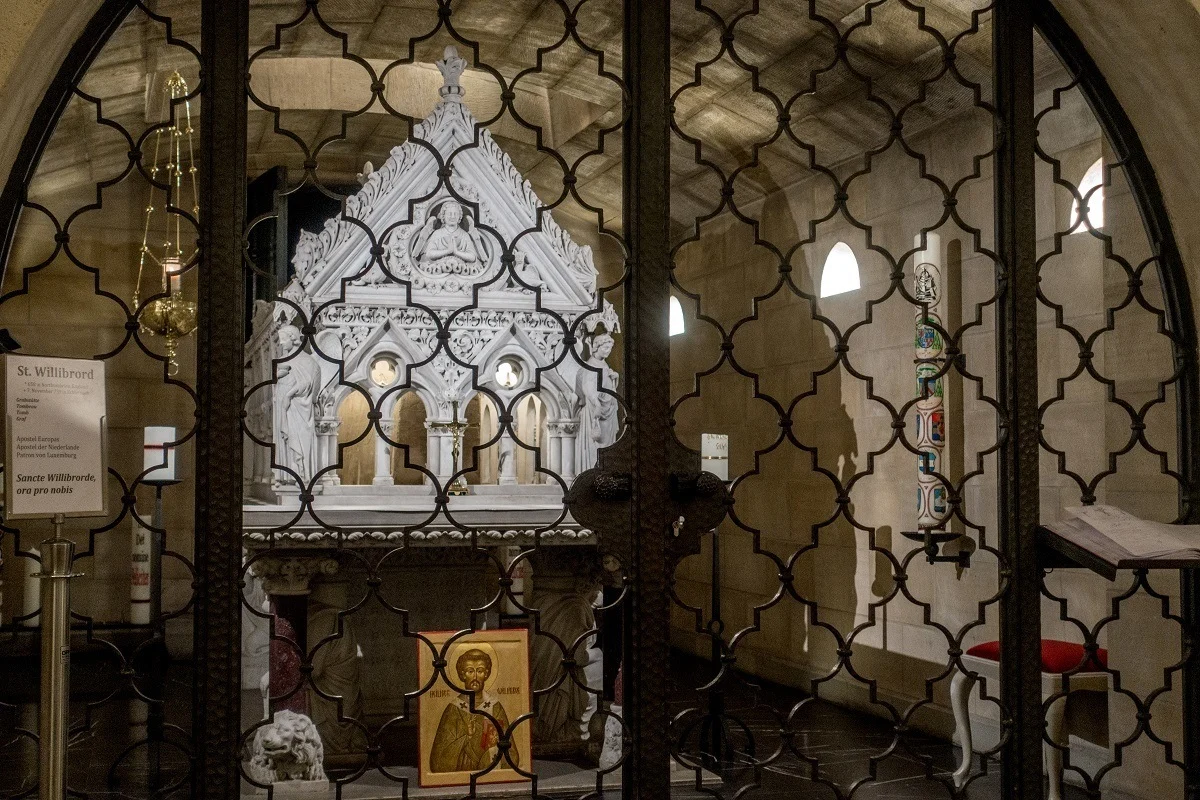
In addition to Echternach Abbey, you can visit the nearby Orangerie. During much of the year, its gardens teem with flowers and plants, making it an ideal place to wander and enjoy nature. For more purposeful hikes, there are numerous nature trails in the area, including the popular Mullerthal trail. Maps and signs mark the way from the town center.
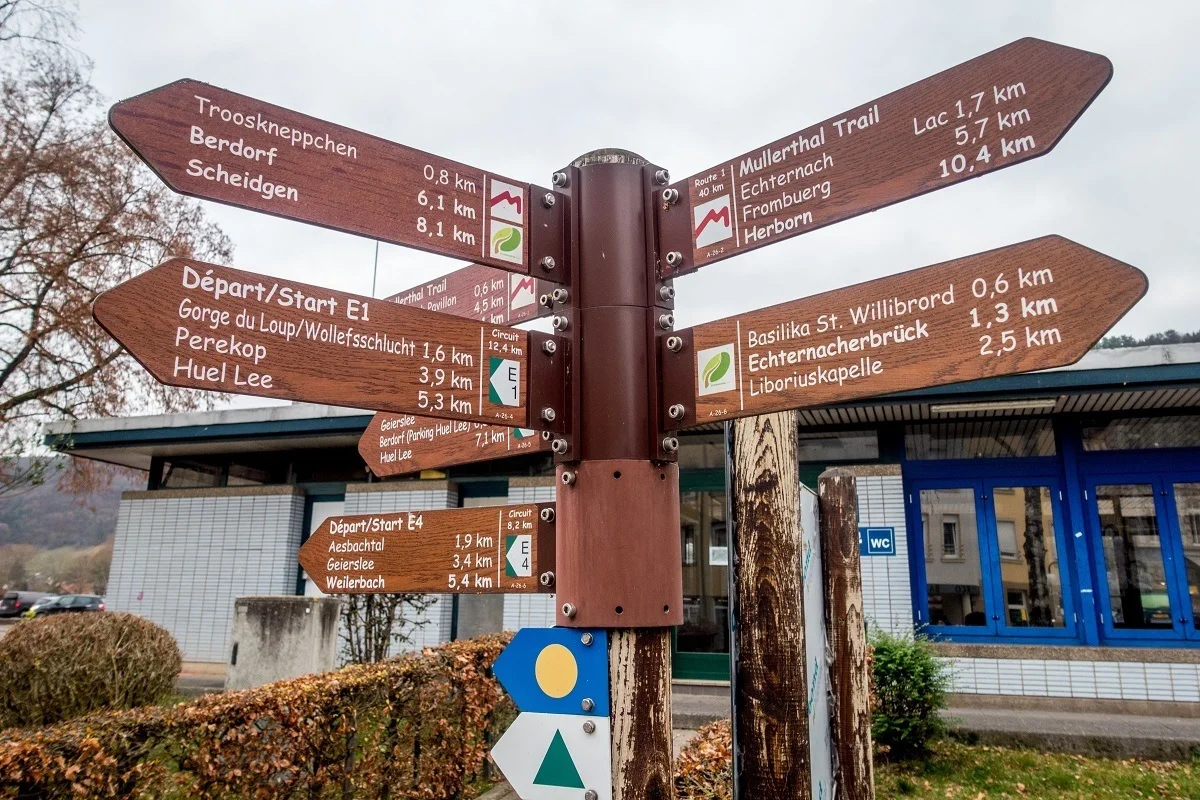
On the outskirts of town, you can visit the remains of a Roman villa. With as many as 70 rooms, the villa was once one of the largest rural properties surrounding the city of Trier (now in Germany). The foundations of this sumptuous house were accidentally discovered in the 1970s during the construction of a nearby artificial lake.
Today, you can see the bases of the villa’s ancient walls and view exhibits and displays about life during the Roman Empire in this part of Europe. The reconstructed Roman garden features over 70 ornamental and medicinal plants. After your visit, take a short walk to the lake that led to the villa’s initial discovery.
Luxembourg’s capital city
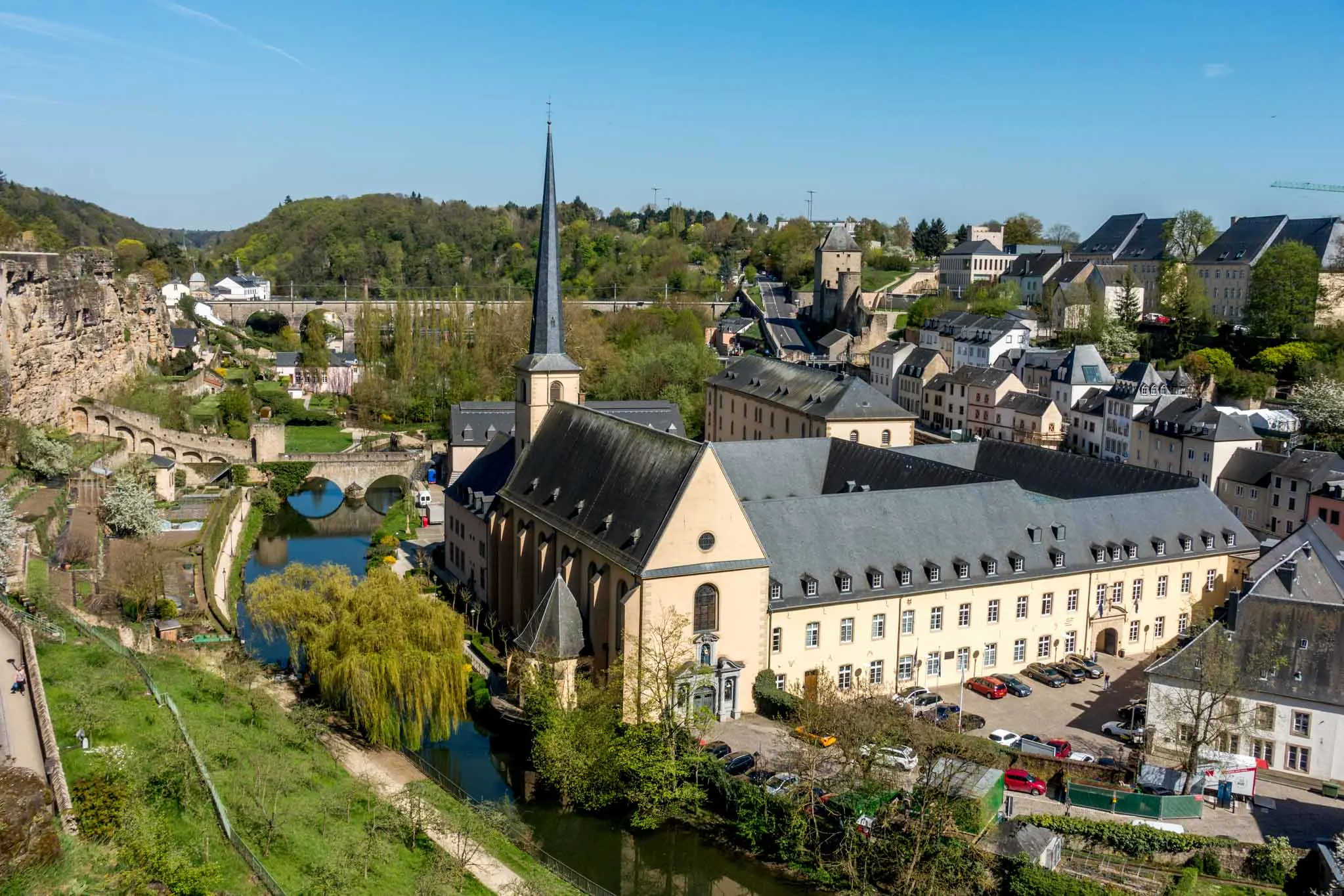
The country’s capital, Luxembourg City is a fascinating mix of ancient and modern. Dating back to the 10th century, the settlement along the Alzette River is now Luxembourg’s largest city.
The city has two levels—the upper part on the rocky promontory and the lower part in the river gorge, called the Grund. Its geography gives the city amazing vistas and views, particularly from the Chemin de la Corniche and Constitution Square, two places from which you can look out over the gorge. We’ve been to the spots at least 10 times, and the views never get old.
There is a lot to see and do in Luxembourg City. The Casemates du Bock are one of the city’s main landmarks. These tunnels built into the rock beneath the ancient castle were a point of defense for centuries, and their history is part of the reason Luxembourg City is a UNESCO World Heritage site. Another one of the main places to visit in Luxembourg is the 400-year-old Notre-Dame Cathedral whose crypt is the resting place for some members of the royal family.
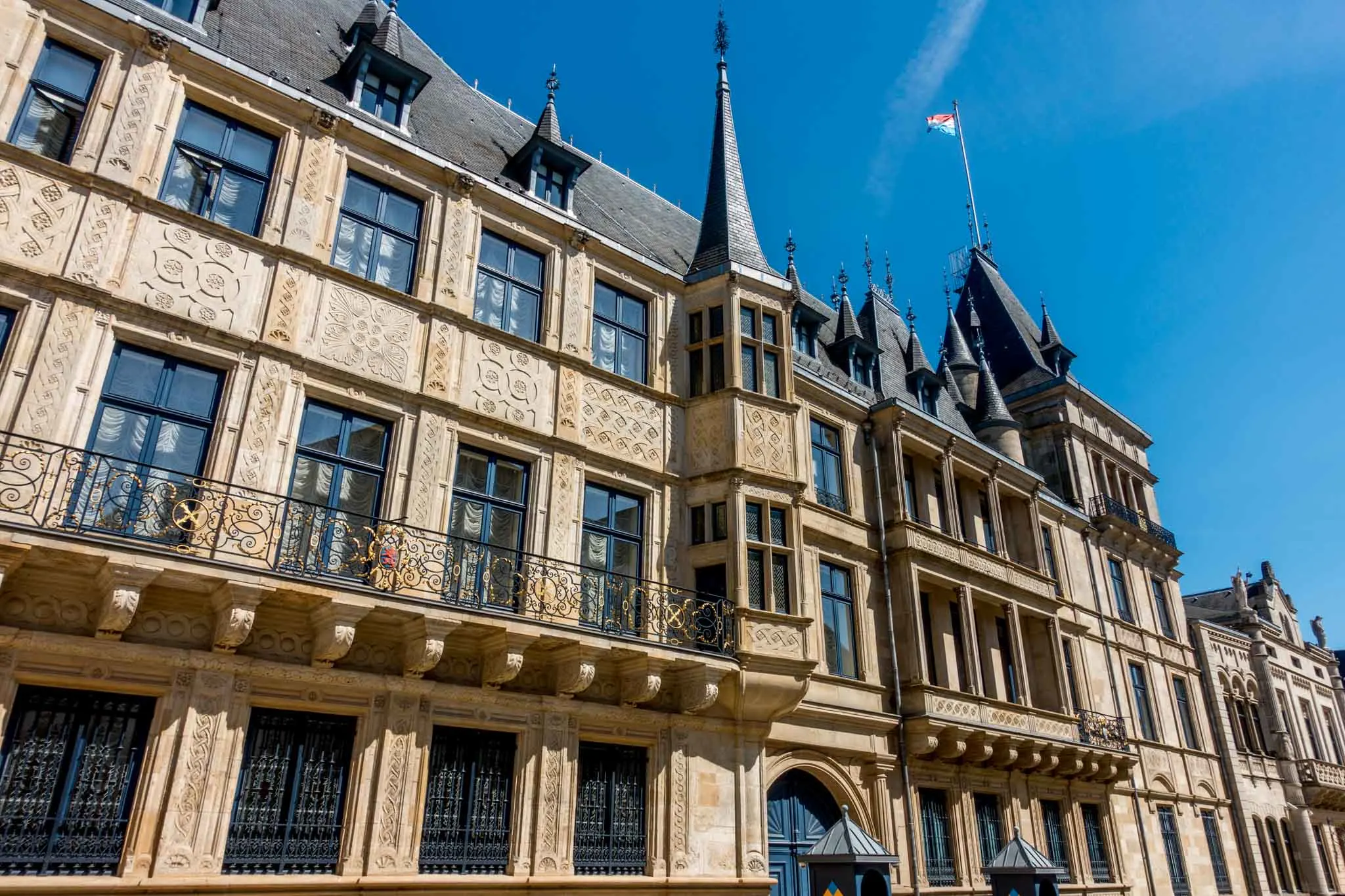
Just steps from the Cathedral, the Grand Ducal Palace is in the heart of the city. The official residence of the Grand Duke has a gorgeous 16th-century Flemish Renaissance façade. The building is long but not tall, so you’ll often find crowds here contorting themselves to get a photo from just the right angle to capture its beauty. In July and August, you can tour the interior.
Less historic and equally fun, Luxembourg City has a thriving café culture and lots of open spaces to people watch and hang out. When the weather is nice, the squares fill with outdoor cafés and people enjoying good food and the local sparkling wine, Crémant de Luxembourg. But colder weather doesn’t stop the fun—in the winter, you’ll find Christmas markets in the city center, and some restaurants create cozy spaces featuring hearty winter specialties and hot drinks.
Vianden Castle
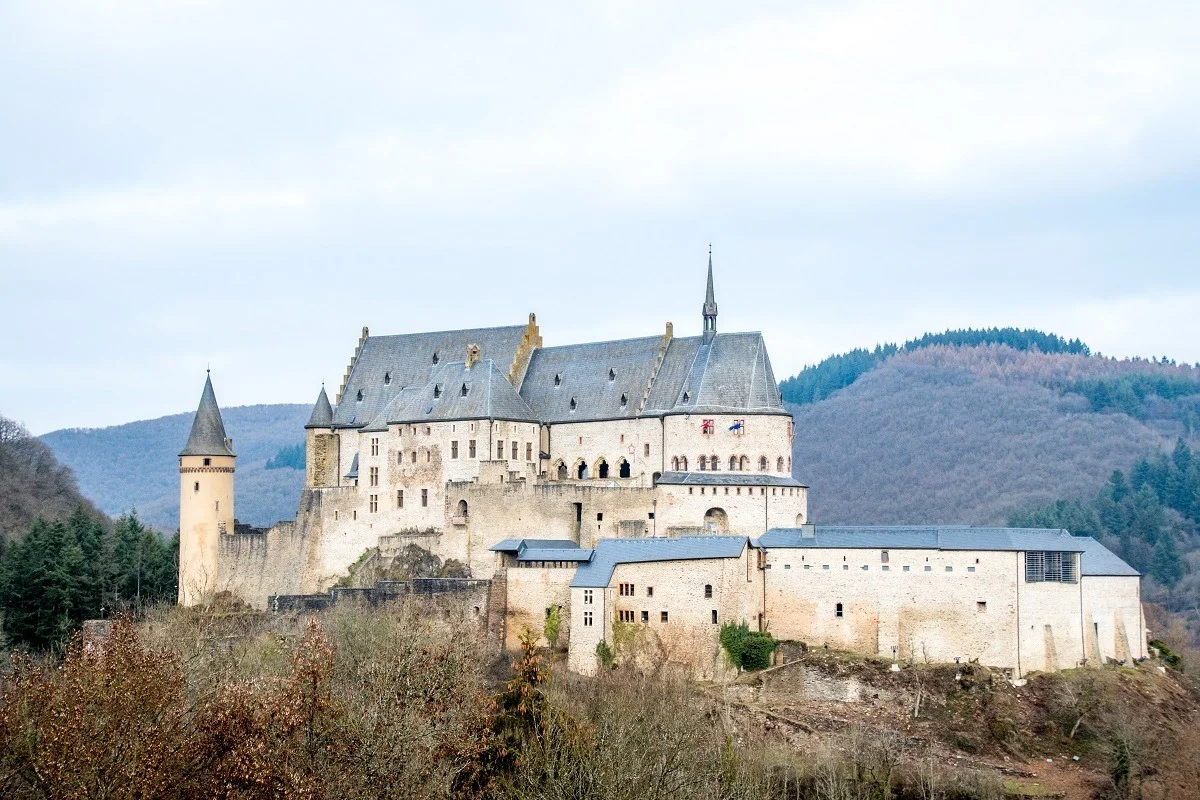
The charming town of Vianden has colorful facades, a castle that dates from the Middle Ages, and a brilliant river that runs through it all. Even during our visit in the off-season, it wasn’t hard to see why Vianden is considered one of the prettiest and best places to visit in Luxembourg.
Vianden Castle is the town’s biggest attraction and one of the largest fortifications along the Rhine River. Perched on the hilltop, the impressive castle was built on the site of a 3rd-century Roman castle and a Carolingian refuge, showing the extensive history of this region of Luxembourg.
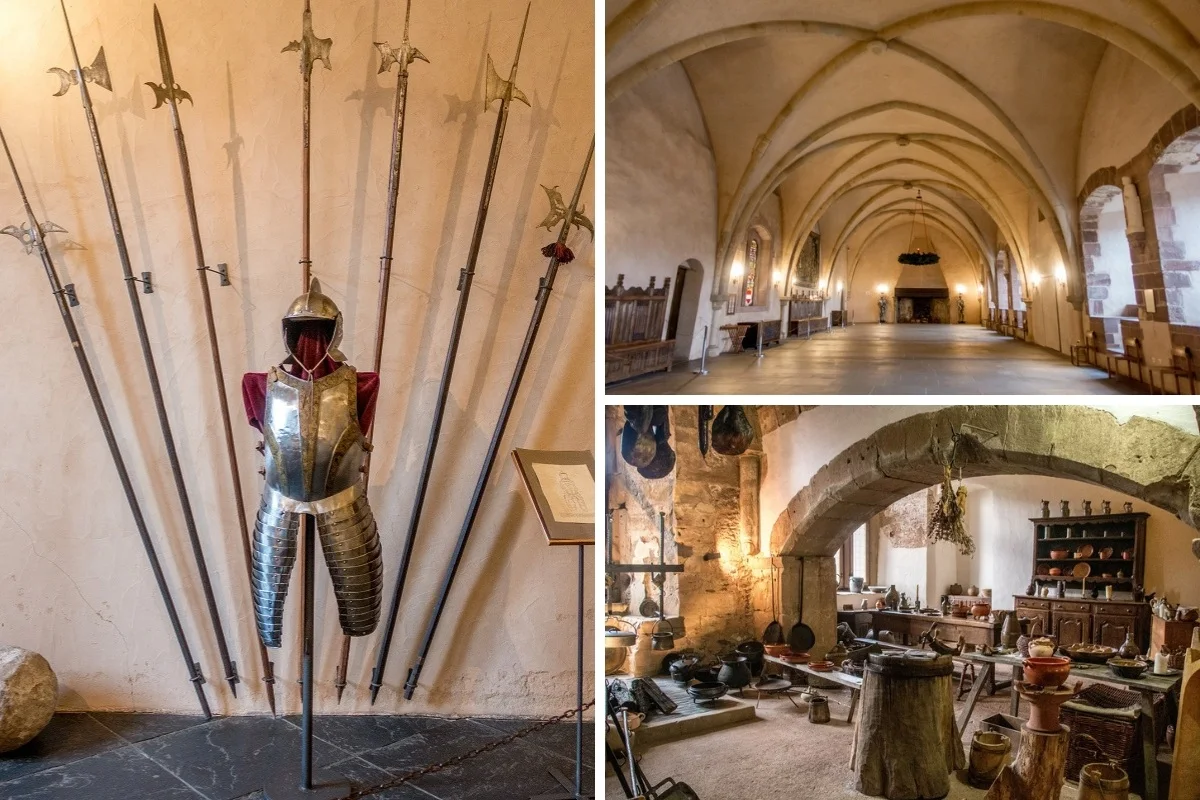
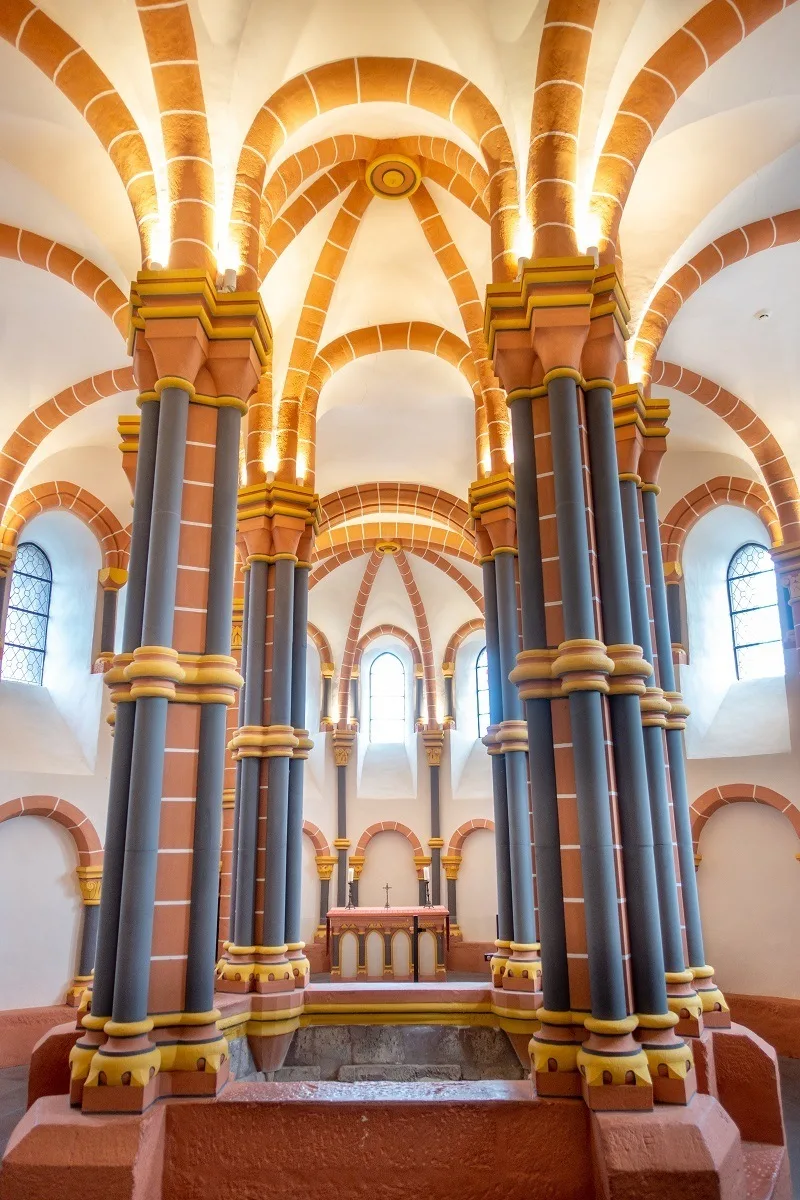
Constructed between the 11th and 14th centuries, Vianden Castle was the seat of the influential counts of Vianden until the early 15th century. Portions of the castle fell into disrepair over the centuries, but its bright chapel and the small and large palaces—which originate from late 12th and early 13th centuries—still stand. The remainder of the castle has been restored to its former grandeur and today is among the most significant historical monuments of Europe.
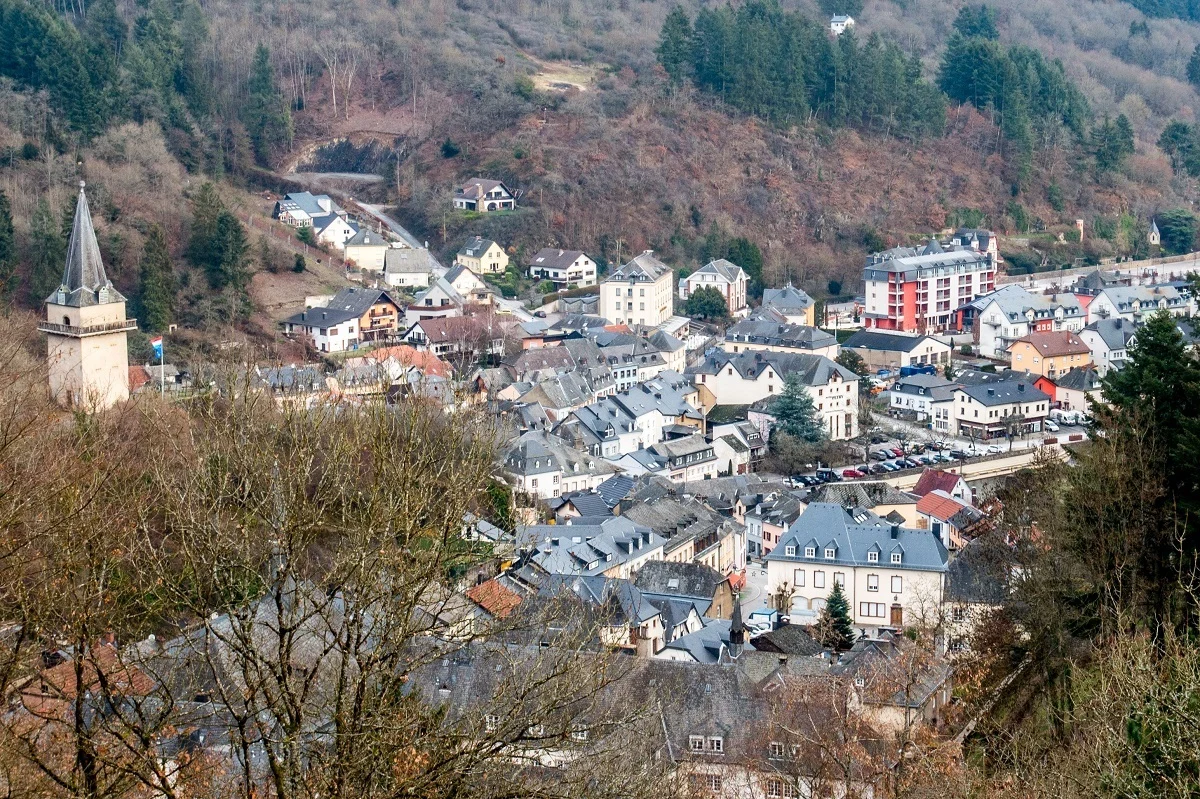
Overlooked by the castle, the town of Vianden itself has a fairy tale feel. The candy-colored buildings and winding lanes border the Our River. There are riverfront cafes and hotels with gorgeous views and medieval churches. There’s even an outdoor heated pool from which you can see the castle. It’s hard to dream of a more idyllic setting.
Mondorf-les-Bains
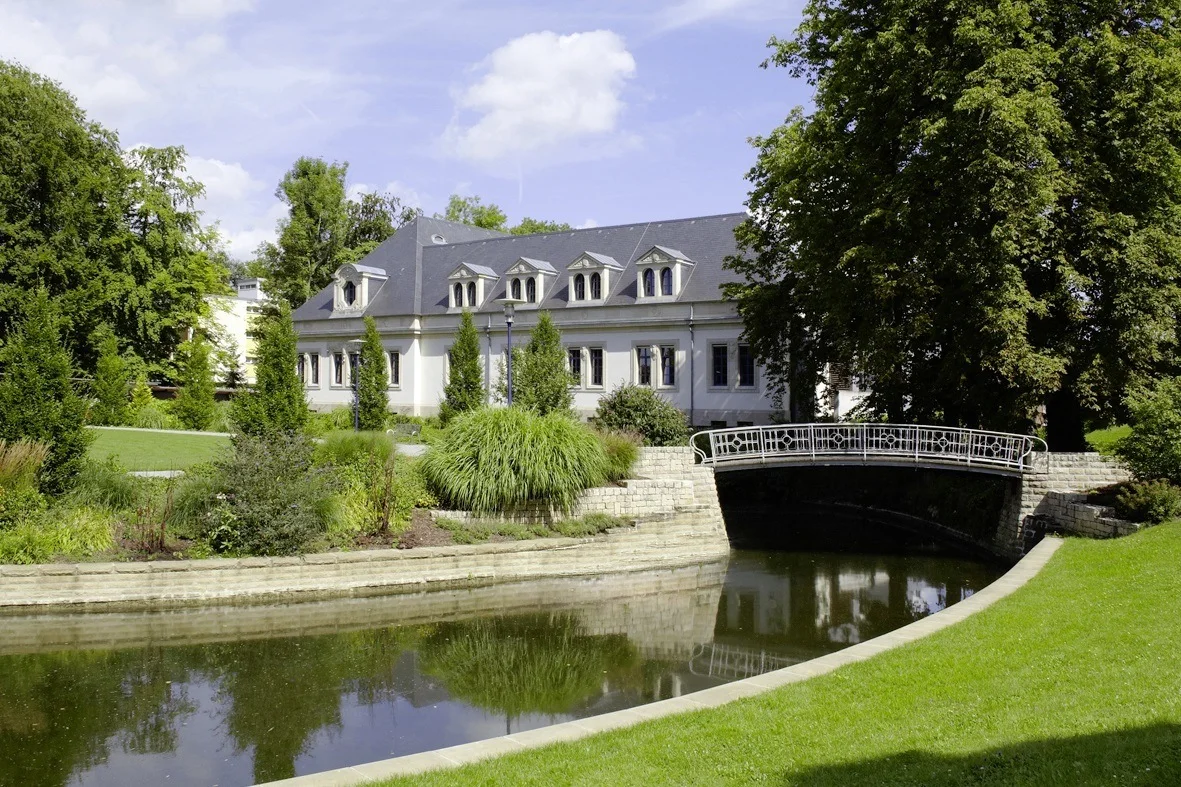
We tend to fill our trips with lots of things to do, checking off major attractions, great restaurants, and fun places to see. But sometimes you just want an awesome place to relax. Mondorf Domaine Thermal is that place.
In the town of Mondorf-les-Bains, Luxembourg, Mondorf Domaine Thermal is a luxurious retreat from the stresses of life. The 100-acre park and resort is built around the healing and soothing properties of a natural hot spring discovered over 170 years ago. As in Saratoga Springs—one of our favorite small cities in the US—a town built up and thrived around this natural discovery.
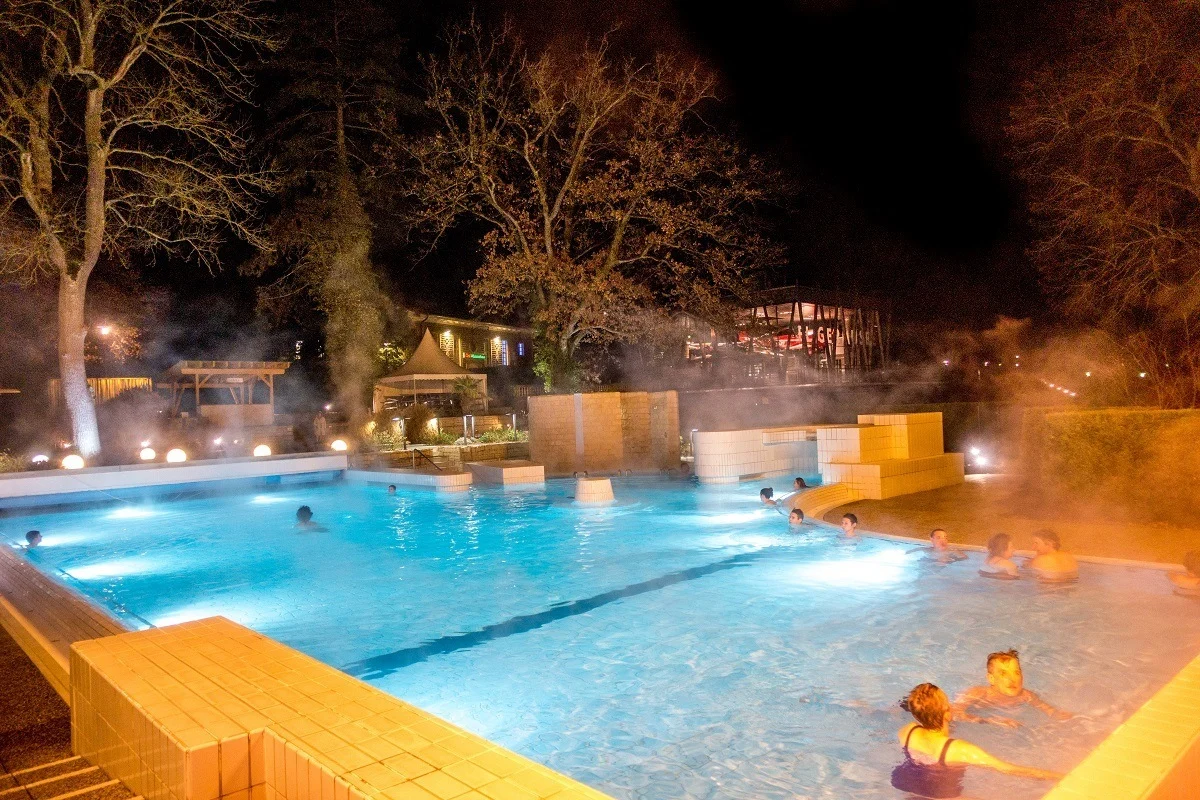
Today, Mondorf Domaine Thermal includes a 100-acre park, a 4-star hotel, restaurants, a beautiful wellness complex, and more. As the only thermal water in Luxembourg, it was one of our top priorities for our winter visit.
From Saturnia, Italy, to Pamukkale, Turkey, we’ve visited hot springs and spa complexes around the world, and Mondorf Domaine Thermal is one of the best. We loved the water circuits and jets that melted away muscle soreness, and the warm water in the cool outdoor air is one of Lance’s very favorite things in the world. There’s also a broad menu of beauty treatments, hammams, and saunas to cure whatever ails you.
Beyond the water, you’ll also find a great selection of restaurants with Luxembourgish and French cuisine, the 4-star Mondorf Parc Hotel, a large selection of fitness facilities. If the gym, tennis, courts, and miniature golf aren’t for you, you can spend time strolling among the 20+ artworks in the park. There’s a little bit of something for everyone here.
Moselle Valley
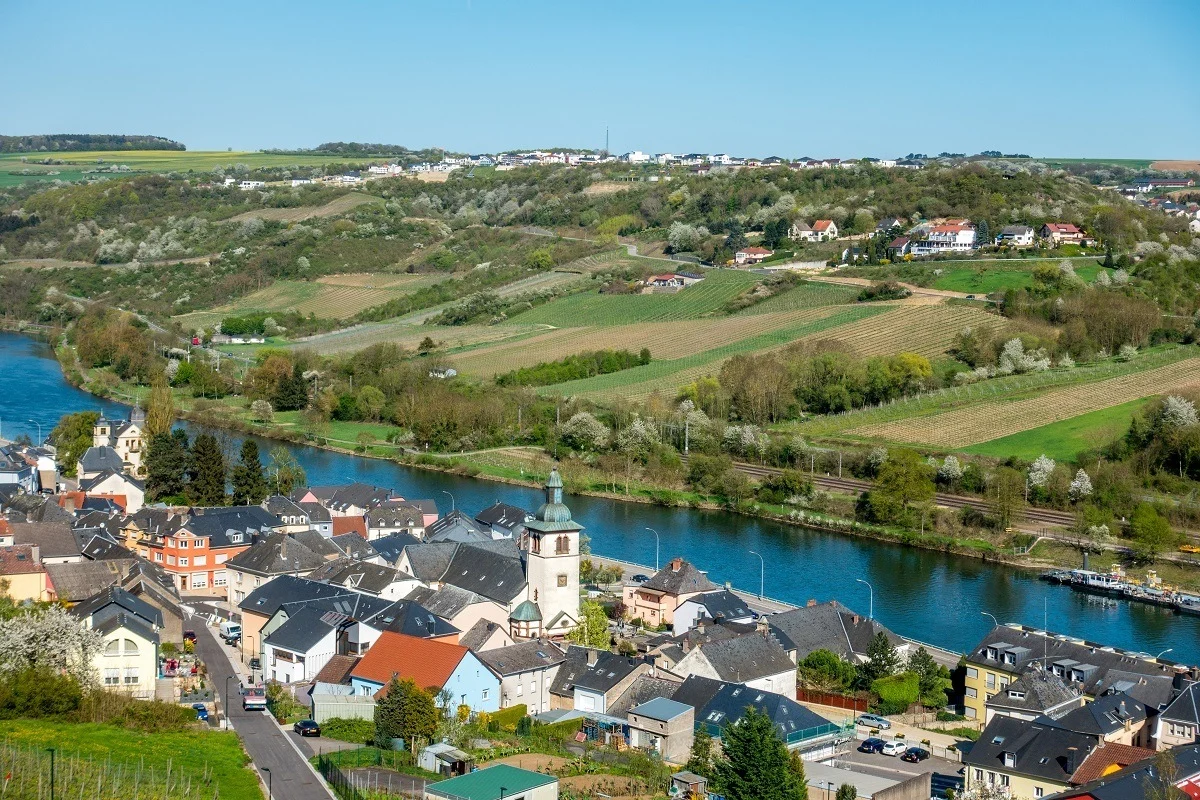
Before visiting Luxembourg, we had never heard of Luxembourg wine. That’s because almost all of this high-quality, relatively low-cost wine is consumed in Luxembourg and a couple of neighboring countries. It made tasting our way through the Moselle Valley that much more interesting.
Luxembourg’s Moselle River valley is the border with one of the world’s most famous wine-producing regions—Germany’s Mosel River valley (slightly different spelling in Germany), which is known for its Rieslings. Wine has been made in the area dating back to Roman times.
Wasserbillig is the northern end of the Wine Road that follows the river along the country border. The route passes through the wine region’s capital, Grevenmacher, and continues through the vineyards of Wormeldange and Remich to Schengen at the southern end. Along the way there are 3200 acres filled with grapes and wineries.
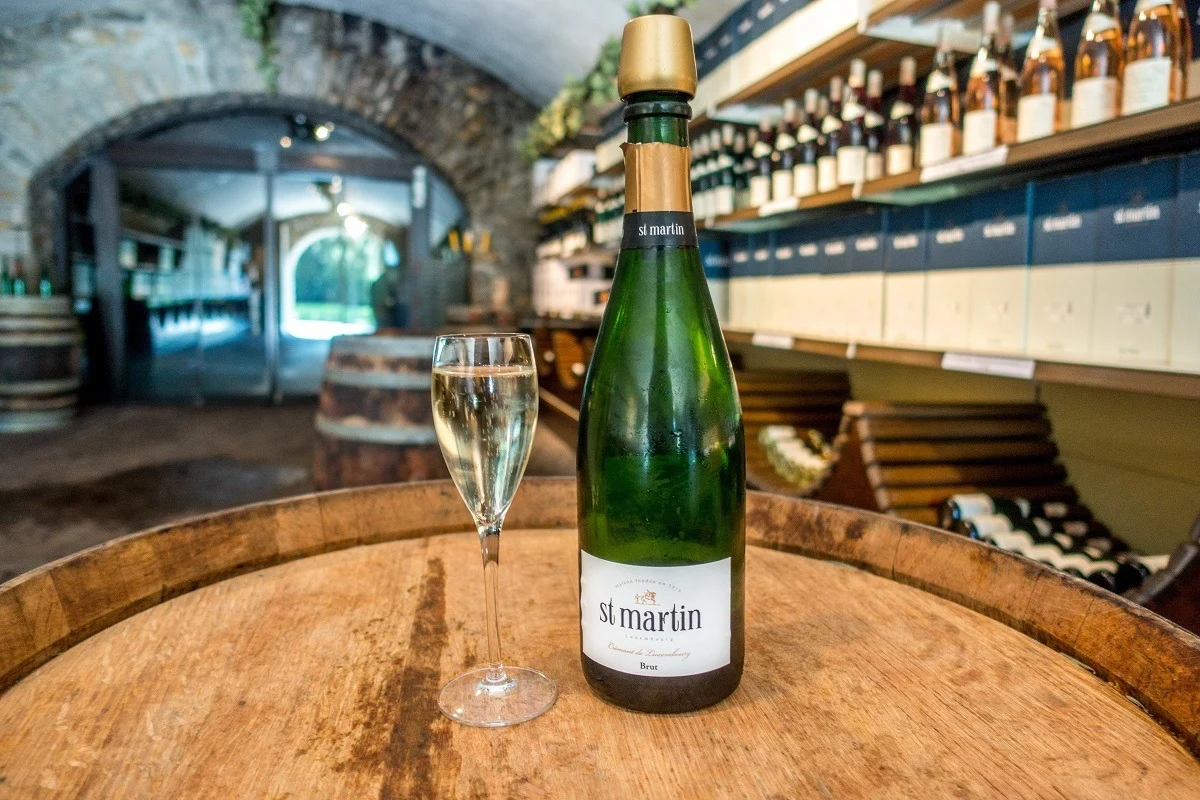
One of smallest wine-growing regions in Europe, it seems like every inch of the hillsides in the Moselle valley is covered in vines. It’s beautiful, whether or not the grapes are in season.
Across the hills, there are familiar grapes like Riesling, Gewürztraminer, and Pinot gris and ones less known to North Americans such as Auxerrois and Elbling. Almost all the wines in Luxembourg are sold by the name of the grape so it’s easy to reach for something familiar or try something new like the ever-present sparkling wine, Crémant de Luxembourg.
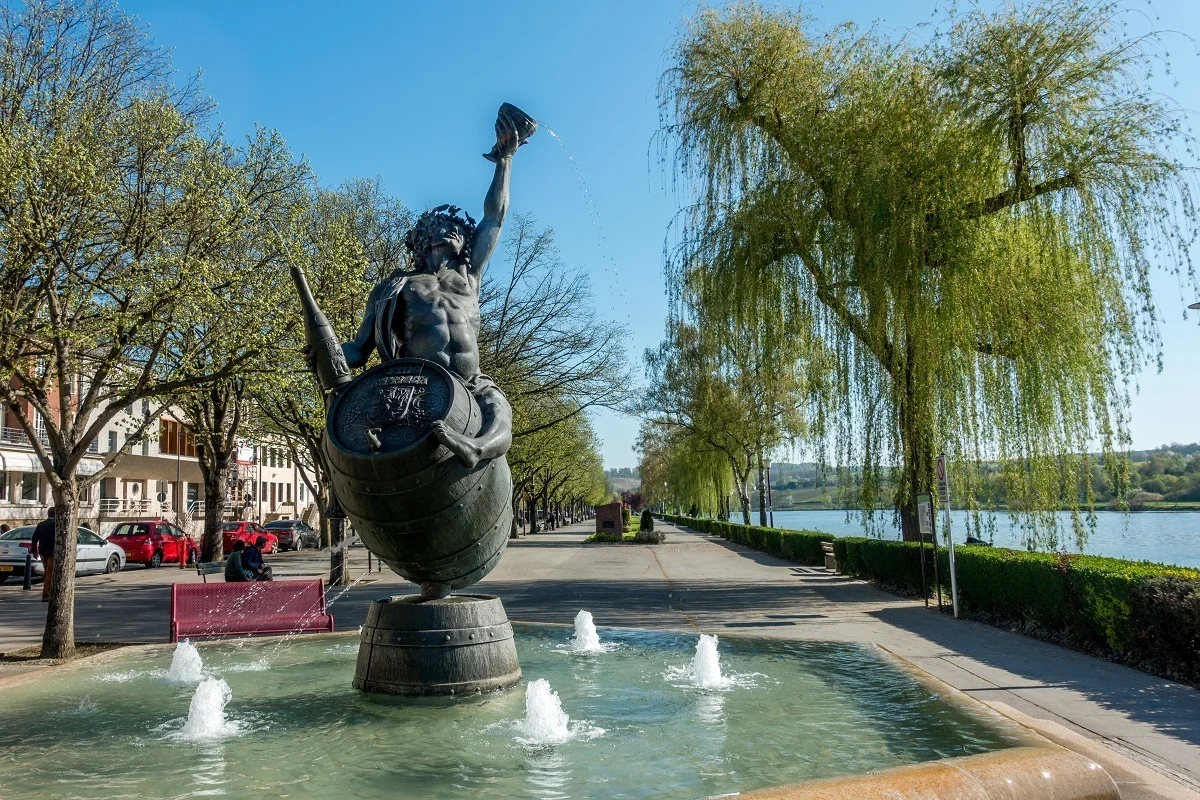
One of our favorite activities is to stop in to different wineries throughout the valley to try their wares. Some locations are best reached by car only about a half-hour from downtown Luxembourg City. Alternatively, you can visit the wineries in the lovely town of Remich easily by bus, and there’s even a riverside restaurant to enjoy at Caves St. Martin. As a bonus, watch the boats cruise along the Moselle and get marvelous views from some of the hillside wineries of the colorful towns below.
Wine in Luxembourg is generally very affordable, and merchants are more than happy to help pack it for a trip home. Even a bottle of Crémant typically costs just €8-10, so it’s a great souvenir from your Luxembourg trip.
We were the guests of Visit Luxembourg. All opinions of the fun and engaging things to see and do are my own.
Laura Longwell is an award-winning travel blogger and photographer. Since founding Travel Addicts in 2008, she has written hundreds of articles that help over 3 million people a year get the most out of their travel. In that time, she has visited nearly 60 countries on 5 continents, often returning to favorite destinations over and over again. She has a deep love of history, uncovering unexpected attractions, and trying all the good food a place has to offer.
In addition to Travel Addicts, Laura runs a site about her hometown of Philadelphia—Guide to Philly—which chronicles unique things to do and places to see around southeastern Pennsylvania. Her travel tips and advice appear across the web.

